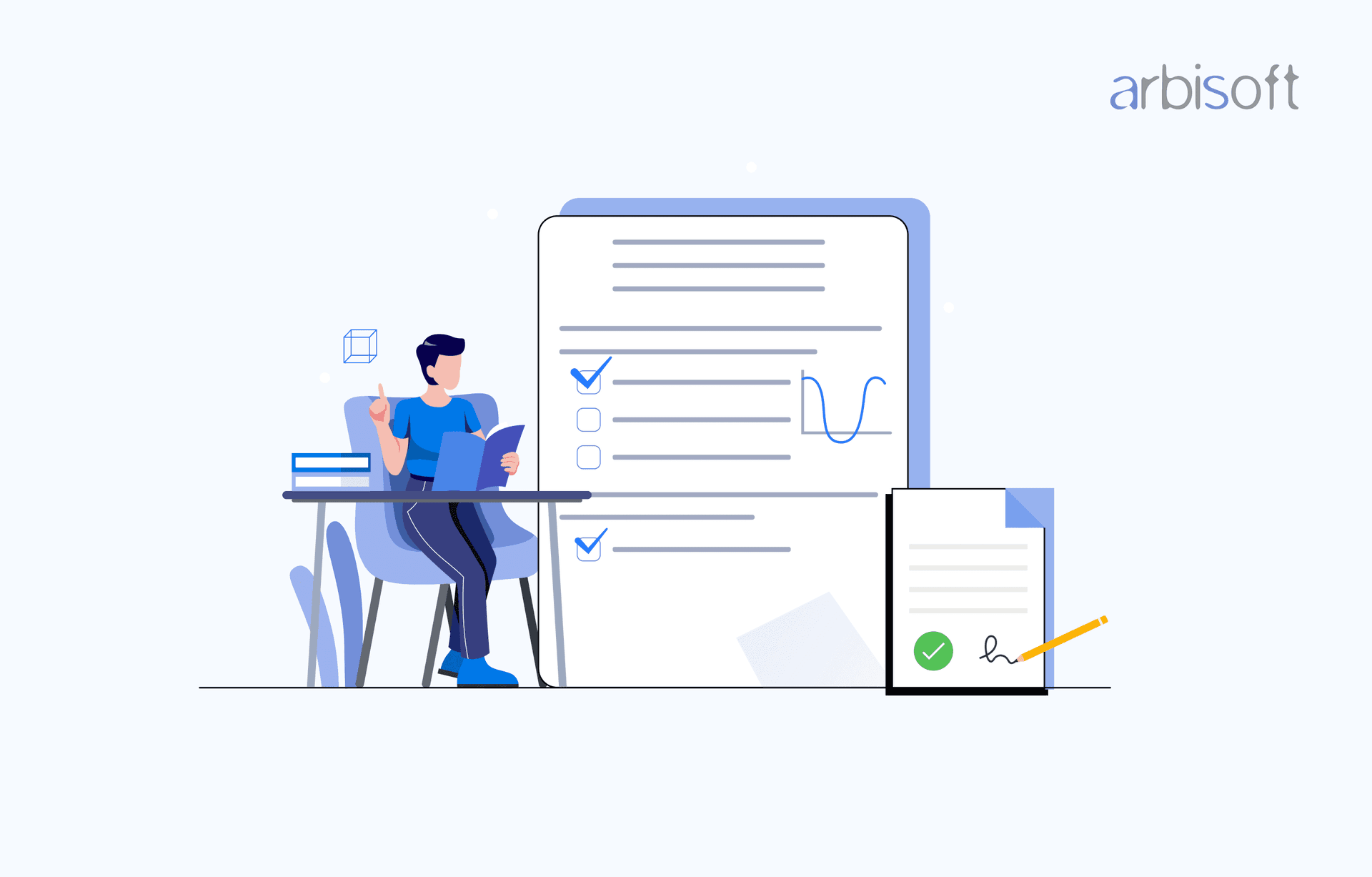We put excellence, value and quality above all - and it shows




A Technology Partnership That Goes Beyond Code

“Arbisoft has been my most trusted technology partner for now over 15 years. Arbisoft has very unique methods of recruiting and training, and the results demonstrate that. They have great teams, great positive attitudes and great communication.”
Combining Grading Contracts with Gamification: A Recipe for Success in the Classroom

In classrooms, making learning fun and engaging is crucial. Two powerful tools, grading contracts, and gamification, have been proven to help students do better and stay motivated. When used together, these methods can create a winning classroom experience.
What Are Grading Contracts?
Grading contracts are agreements between students and teachers that explain what students need to do to get certain grades. Instead of just using traditional grades, these contracts focus on effort, participation, and improvement. They give clear rules and steps for students to follow to reach their desired grades, making grading more transparent and less stressful.
Gamification means adding game-like elements to non-game activities, like schoolwork. This can include earning points, badges, and rewards for completing tasks, as well as adding competition and teamwork to learning activities. Gamification has been shown to make students happier, more interested, and motivated, about learning. In fact, most ed-tech companies are now heavily banking on gamification to elevate STEM education, often incorporating innovative edtech services to further enhance learning outcomes.
Why Combine Grading Contracts with Gamification?
Combining grading and gamification creates a powerful mix that can change the classroom for the better. Here are some key benefits:
1. Personalized Learning
Grading contracts allow for a personalized approach to education. Students can work at their own pace and focus on areas where they need to improve. This personalization is even better when combined with gamification as students can earn rewards and recognition for their unique achievements and progress.
2. Improved Teamwork
Gamification often includes team-based challenges and group projects. This helps build a sense of community and encourages students to work together towards common goals. A study by the Journal of Educational Psychology found that group gamified activities led to a 40% improvement in student teamwork skills.
3. Better Motivation
Research has shown that gamification can significantly boost student motivation. A study by the University of California found that students who took part in gamified learning activities were 34% more motivated compared to those in traditional settings. By adding grading contracts, students are even more motivated because they have clear goals and know what they need to do to achieve them.
4. Increased Engagement
Engagement is crucial for effective learning. According to a 2023 report by EdTech Magazine, classrooms that used gamification saw a 50% increase in student engagement. When students are actively involved and interested in their learning, they are more likely to remember information and understand it better.
5. Reduced Stress
Traditional grading can be stressful for students. Grading contracts provide clear and achievable goals, reducing anxiety. The fun and interactive nature of gamification further lowers stress by making learning enjoyable and rewarding.
Ready to transform your classroom?
Enhance your classroom experience with our innovative grading contract template.

Ready to transform your classroom?
Make your classroom more engaging with our innovative grading contract template.

How to Combine These Approaches
To effectively combine grading contracts with gamification, try these steps:
1. Create Clear Grading Contracts
Set specific rules for each grade level, focusing on effort, participation, and improvement. Make sure the contracts are easy to understand.
2. Add Gamified Elements
Introduce game-like elements such as points, badges, leaderboards, and rewards into learning activities. Make sure these elements align with the goals in the grading contracts.
3. Monitor and Adjust
Keep an eye on student progress and adjust the grading contracts and gamification elements as needed. Give regular feedback to help students stay on track and motivated.
4. Encourage a Supportive Environment
Create a classroom culture that celebrates achievements and encourages teamwork. Recognize and reward not only individual accomplishments but also group efforts.
10 Practical Tips for Using Grading Contracts and Gamification in Education
Here are some simple tips and insights to help you use grading contracts and gamification effectively in education:
1. Student-Created Content
Encourage students to create their own games and grading agreements. For example, students can design quizzes or challenges for their classmates. This involvement helps them feel more engaged in their learning.
2. Hidden Rewards
Introduce surprise rewards like badges or extra points for students who help others or show improvement. For instance, give a "Helper Badge" to students who assist peers with difficult concepts or a "Progress Badge" for those who improve their grades over time.
3. Smart Leaderboards
Use leaderboards wisely. They can encourage competition but might discourage students at the bottom. For example, rotate leaderboards based on effort or improvement instead of just high scores so everyone gets a chance to be recognized.
4. Storytelling
Create a story or theme that connects the different parts of your gamified activities and grading contracts. For example, turn the class into a "learning adventure" where each assignment is a quest, and students are heroes earning points and badges along the way.
5. Peer Feedback
Include peer feedback in the grading process. For example, allow students to earn points for giving helpful feedback on classmates’ projects or assignments. This promotes a supportive learning environment.
6. Flexible Contracts
Allow some flexibility in grading contracts. For example, if a student misses a deadline due to illness, provide an extension or an alternative assignment. Flexibility can reduce stress and make the system more accommodating.
7. Small Tasks
Break down learning goals into smaller, manageable tasks. For example, instead of assigning a big project due at the end of the semester, break it into weekly tasks with points for completing each one. Gamify these micro-tasks to keep students engaged without overwhelming them.
8. Parent Involvement
Inform parents about the grading contracts and gamification elements. For example, send a newsletter explaining how the system works and how they can support their children’s learning at home.
9. Personalized Challenges
Create challenges based on individual student interests and strengths. For example, if a student loves drawing, you could assign a project where they illustrate a concept learned in class. This makes learning more relevant and exciting for each student.
10. Use Latest Technology
Use apps and online platforms to manage grading contracts, track progress, and facilitate gamification. For example, platforms like Kahoot! can create engaging quizzes and games. Technology provides immediate feedback, which helps keep students engaged.
These tips and examples can make grading contracts and gamification more effective and enjoyable for students, even if you're new to these methods.
Wrapping Up
Combining grading contracts with gamification is a recipe for success in the classroom. This approach not only boosts motivation and engagement but also personalizes learning and reduces stress. By using these strategies, teachers can create a fun and supportive learning environment that helps students thrive.
As education continues to change, it's important to stay informed about new strategies and its benefits. By using the latest research and combining these methods, teachers can effectively prepare students for success in both school and life.
























